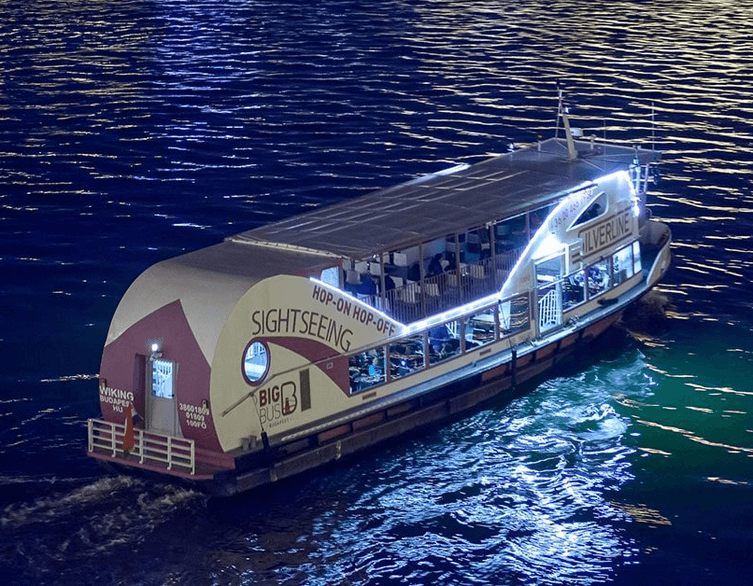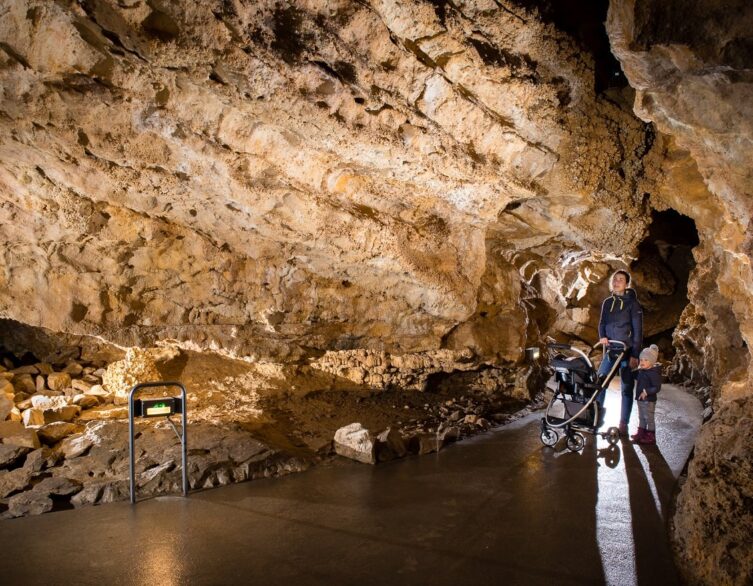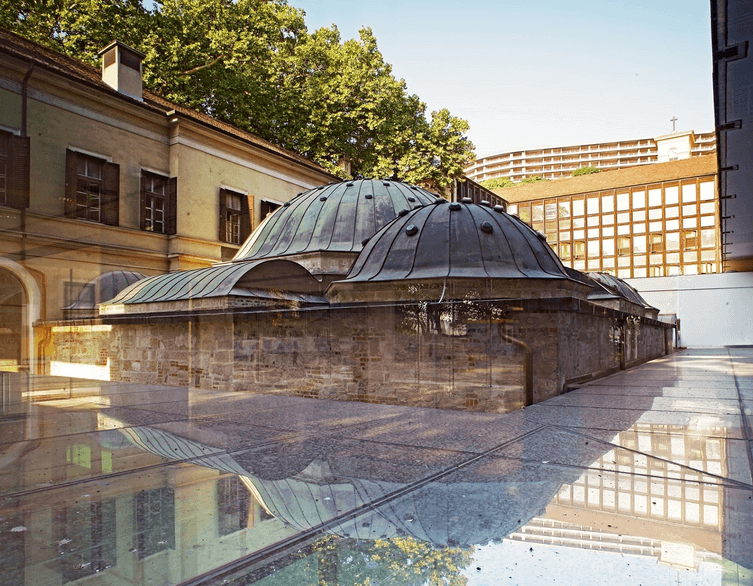Discover Budapest’s Hidden Underground Wonder: The Molnár János Cave

When you think of Budapest, your mind probably conjures images of the majestic Parliament building, the iconic Chain Bridge, or perhaps a relaxing soak in one of the city’s famous thermal baths. But what if I told you that beneath the bustling streets of Hungary’s capital lies one of the world’s most extraordinary hidden treasures – a vast underwater cave system that even CNN has called a “hidden world”?
Welcome to the Molnár János Cave, Budapest’s best-kept secret that’s finally getting the international recognition it deserves. This isn’t your typical tourist attraction – it’s an adventure that will literally take you into the depths of the earth beneath one of Europe’s most beautiful cities.
What Makes the Molnár János Cave So Special?
Picture this: while tourists above ground queue for the famous Lukács Thermal Baths, just yards away beneath their feet stretches an incredible 5.8-kilometer-long underwater cave system that plunges nearly 90 meters below the surface. This isn’t just any cave – it’s one of the largest active thermal water caves in the world, where crystal-clear waters maintain a comfortable bath-like temperature year-round.
The cave system lies hidden beneath the elegant Rózsadomb (Rose Hill) district, an affluent neighborhood known for its beautiful villas and tree-lined streets. What makes this place truly extraordinary is that it’s a living, breathing geological phenomenon – the cave is still growing, still being carved by mineral-rich thermal waters that have been shaping these passages for thousands of years.
A Journey Back in Time: The Geological Marvel
To understand why the Molnár János Cave is so remarkable, you need to know Budapest’s geological story. The city sits on a fault line where mountains meet plains, and this unique positioning has created something magical. Over millennia, ascending thermal waters have dissolved limestone, marlstone, and karst rock, creating a Swiss cheese labyrinth of chambers and passages beneath the city.
What’s fascinating is that Budapest has over 200 caves running beneath its streets – a total network spanning more than 30 kilometers. But the Molnár János Cave stands apart because it’s still actively forming. The waters flowing through it are rich in hydrogen sulfide and carbon dioxide, creating a mildly acidic mixture that continues to eat away at the walls, constantly expanding this underground universe.
The Adventure of a Lifetime: Cave Diving in Budapest
Now, here’s where things get exciting for adventure seekers. The Molnár János Cave isn’t accessible to your average tourist – and that’s what makes it so special. This is cave diving at its most spectacular, reserved for certified cave divers who want to experience something truly unique.
Best deals of Budapest
The Diving Experience
Imagine descending through warm, crystal-clear water at a comfortable 27°C (80°F) in the upper layers – a far cry from the frigid 4-15°C waters typical of most cave diving locations worldwide. As you go deeper, the temperature creates distinct thermal layers: 20°C in the middle depths and 17-18°C in the lower regions where cooler water from the Buda Hills mingles with the thermal springs.
The cave offers something rare in the diving world: spacious chambers and gentle currents instead of the tight, claustrophobic passages found in most underwater caves. Divers follow guidelines strung a meter above the cave floor, gliding through a surreal landscape of mineral-streaked walls studded with crystals, chambers that shift in color and texture from one to the next.
What You’ll See Down There
The underwater world of Molnár János Cave is like stepping into an alien landscape. You’ll encounter:
- Fossilized seashells and sea urchins clinging to walls – remnants from millions of years ago when the Pannonian Sea covered much of modern-day Hungary
- Crystal formations that sparkle in your headlamp’s beam
- Nearly invisible shrimp darting through the water
- Diverse geological formations with different colored rocks and mineral deposits
The visibility is spectacular – you can see as far as your light reaches, provided you don’t disturb the delicate silt on the cave floor.
The Science Behind the Wonder
What makes the Molnár János Cave even more fascinating is that it’s still being discovered. The officially mapped network runs 5.8 kilometers, but new passages are found regularly. Volunteer explorers make weekly expeditions into the caves, laying new guidelines and updating maps that continue to reveal the cave’s secrets.
Scientists are actively studying this underground ecosystem, collecting water samples to monitor for microplastics and pollution. Recent research has shown that while some contamination exists at known entry points, the newly explored areas remain pristine and untouched.
The cave is also home to unique species adapted to this thermal environment, including three species of Niphargus (tiny crustaceans), along with various Amphipoda, Isopoda, and Neotaenioglossa species that have evolved specifically for this underwater world.
The Historical Connection: János Molnár’s Legacy
The cave’s name honors János Molnár, a 19th-century pharmacist and scientist who was the first to seriously investigate this area. Born in 1814, Molnár was fascinated by Budapest’s thermal springs and suspected that a vast water-filled cave system existed beneath the hills.
In 1859, he published a detailed study called “A Lukácsfürdő Budán” (The Lukács Bath in Buda), where he documented his findings about the thermal springs feeding the area. Remarkably, he even suggested that a passage should be opened to explore the water-filled cave – though he couldn’t have imagined that 160 years later, cave divers would be doing exactly that!
Molnár emphasized the importance of protecting this “natural treasure,” showing that even in the 19th century, people recognized the unique value of this underground world.
Planning Your Cave Diving Adventure
If you’re a certified cave diver, visiting the Molnár János Cave should be at the top of your Budapest bucket list. Here’s what you need to know:
Getting There
The cave entrance is tucked away next to a small lily-covered lake beside a crumbling 19th-century building that resembles an Ottoman bathhouse. Look for the mural of a diver on the firewall – it’s your hint that something special lies beneath. A sign reading “Happiness Factory” flanked by smiling emojis marks the unmarked doorway in the cliff.
What to Expect
Morning dives are available by reservation through MJ Cave, the local operator. After a briefing and gear setup, your first one-hour dive follows the main guideline system. For more experienced divers, deeper exploration is possible – some dives can reach nearly 60 meters and require decompression stops.
Don’t worry about bringing equipment – full gear rental is available on-site, making this accessible for certified cave divers traveling to Budapest without their own gear.
Important Requirements
Only certified cave divers are allowed in the cave. The complete darkness and fragile environment demand proper training and experience. The cave’s pristine condition depends on divers following strict protocols to avoid disturbing the delicate ecosystem.
Why the World is Taking Notice
The recent CNN feature highlighting the Molnár János Cave represents a significant moment for Budapest’s hidden natural treasures. While the city has always been famous for its thermal baths and architectural wonders, this international attention is shining a spotlight on the incredible geological heritage that lies literally beneath visitors’ feet.
This recognition is particularly important because the cave represents something truly rare – an active thermal cave system in the heart of a major European capital. Most cave diving locations require traveling to remote areas, but here you can experience world-class cave diving just meters from city streets and historic landmarks.
Beyond Molnár János: Budapest’s Underground Network
The Molnár János Cave is just one jewel in Budapest’s underground crown. The city’s network of nearly 200 caves offers various experiences for different types of adventurers:
- Pálvölgyi Cave and Szemlő-hegyi Cave are accessible to regular tourists
- Kőbánya Mine offers unique diving experiences in flooded mining tunnels
- Numerous unexplored thermal caves await future discovery
This vast underground network demonstrates that Budapest isn’t just a surface-level destination – it’s a city with hidden depths waiting to be explored.
Planning Your Visit to Budapest’s Hidden Wonder
Whether you’re a certified cave diver ready to plunge into the Molnár János Cave or simply fascinated by this hidden world beneath Budapest, this discovery adds an entirely new dimension to visiting Hungary’s capital.
The cave represents everything that makes Budapest special: a perfect blend of natural wonder, scientific discovery, historical significance, and adventure. It’s a reminder that even in our well-explored world, incredible discoveries still await – sometimes right beneath our feet in the heart of one of Europe’s most beloved cities.
So next time you’re soaking in the Lukács Baths or strolling through the elegant streets of Rózsadomb, remember that just beneath you lies an underwater universe that’s capturing the attention of explorers, scientists, and adventure seekers from around the world. The Molnár János Cave proves that Budapest’s treasures extend far beyond its famous surface attractions – they dive deep into the very foundations of this magnificent city.
Related news
Related attractions















